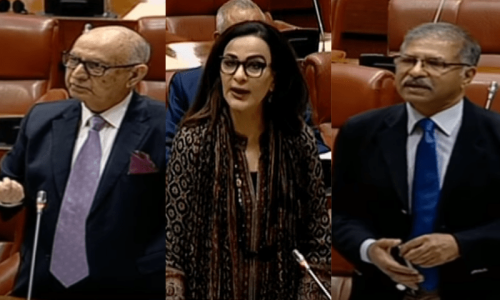
Dr Shenila Khoja-Moolji is Assistant Professor of Gender, Sexuality and Women’s Studies at Bowdoin College, US. She speaks to Eos about her new book, Forging the Ideal Educated Girl: The Production of Desirable Subjects in Muslim South Asia, in which she traces the figure of the “educated Muslim girl” in the political and social context of education reform and development campaigns pursued in British India and post-colonial Pakistan, showing that an evolving gender narrative intersects with that of the nation, class and religion.
Why did you choose to write on this subject?
I had been writing about the current convergence on the figure of the girl in international education development policy and practice. I was fascinated by the ways in which the ‘educated girl’ is often presented as the solution to a wide range of structural problems, including poverty and terrorism. I thus wanted to explore the societal investments in this figure. The ‘Musalman woman’ of the past, too, was framed similarly — her education was also expected to transform her into a figure who could improve her family and nation. So the book is an attempt to trace a genealogy of this figure in the context of colonial India and Pakistan. I wanted to show that a range of different entities — from colonial officers and Christian missionaries to Muslim social reformers, the Pakistani state, and now corporations such as Nike — converge on this figure to articulate different imaginations of an ideal social order. In this way, education becomes both regulatory and emancipatory for girls.
This work largely falls under historical and cultural studies with emphasis on colonial India and post-colonial Pakistan. What are the major continuities and departures that you observe in the construction of the ‘ideal’ woman/girl in contemporary Pakistan from pre-Partition India?
A key intervention of the book is to show that at any one moment, we will find multiple notions of ideal girlhood that exist alongside each other. However, some versions gain prominence given the sites of their articulation. The state, for instance, is able to quite loudly articulate its imaginations of woman- and girlhood. Likewise, in the current moment, transnational corporations and non-governmental organisations in Pakistan also have the platform and the capital to advance their imaginations of girlhood. So, instead of a linear, progressive narrative from point A to B, I traced these multiple ideas that circulate and how they are linked with other issues such as notions of respectability, social class, concerns around waged-work, etc. As the concerns change, notions of the ideal girlhood also change, not only across time and space, but also within any particular moment.
In your book you problematise the project of neo-liberalisation of education that is being pursued by the government in Pakistan and also in other South Asian countries, including India. What do you think is an alternative to this neo-liberal model?
I am more concerned about the fact that in our drive to educate girls, we are also putting upon them the responsibility of solving political problems — such as poverty and disease — that actually require political solutions such as taxation policies, living wages, addressing state corruption, securing safer working conditions, etc. So, we see a shifting of the burden of development on to girls, which is problematic for me. That is a key practice of neo-liberal articulations of education.
You argue in your book that in the making of a nation, the subject of the ideal woman intersects with national identity, development and modernisation. The political debate in contemporary Pakistan revolves around the concept of ‘Naya Pakistan’ by the current Prime Minister Imran Khan. Do you think the evolution of the discourse on Naya Pakistan will impact the idea of the ‘ideal’ woman? Where do you locate women in this narrative?
We will have to wait and see, and analyse the discourse as it evolves. However, broadly, yes, I do think women will continue to be featured prominently in the ways in which ‘Naya Pakistan’ articulates itself. It will include statist as well as non-statist articulations. The excessive attention to First Lady Bushra Maneka’s dress is a case in point. The nation forges itself through its discourse on women and it will continue to do so. And as scholars, we will continue to pay attention to it, to observe how the discourse both creates space for women but also narrows possibilities for them.
Do you plan to take this debate on gender, religion and nation forward with other similar projects in the future?
I am actually extending a line of enquiry that I wrote about briefly in the book. It has to do with the auto/biographical text Hayat-i-Ashraf compiled by Syeda Muhammadi Begum during the early 20th century. I am engaging with the text to argue how we can re-animate Muslim women’s auto/biographical writings toward decolonial ends. The text is quite generous because it includes the writings of Bibi Ashraf — one of the earliest Muslim women schoolteachers — herself as well as those of her daughter and of her editor, Muhammadi Begum. And, now with me writing about it, we have yet another kind of engagement with the text. So the text travels across time and continues to teach us lessons about gender and education.
Published in Dawn, Books & Authors, September 23rd, 2018















































Dear visitor, the comments section is undergoing an overhaul and will return soon.